Meat Chickens – Best Breeds, Care and Troubleshooting Tips
This post may contain affiliate links. Read my full disclosure here.
Home raised meat chickens can be quick to raise and taste much better than their grocery store counterparts, but there are a few things you need to know to get started.
We’ll take you through the best meat chicken breeds, basic care and troubleshooting tips.
Best Meat Chicken Breeds
First, you need to decide if want to raise chickens for meat only, or you want dual purpose chickens for meat and eggs. For most people, I recommend breeds specifically bred for meat only.
Why? Because the fast maturing birds bred to produce meat are ready very quickly.
You can raise three batches of Cornish cross chickens in the time it takes to raise one batch of heritage breed chickens. They eat roughly the same amount of food, but you get three times the meat.
You can see a weight comparison in the post “Heritage Meat Chickens“.
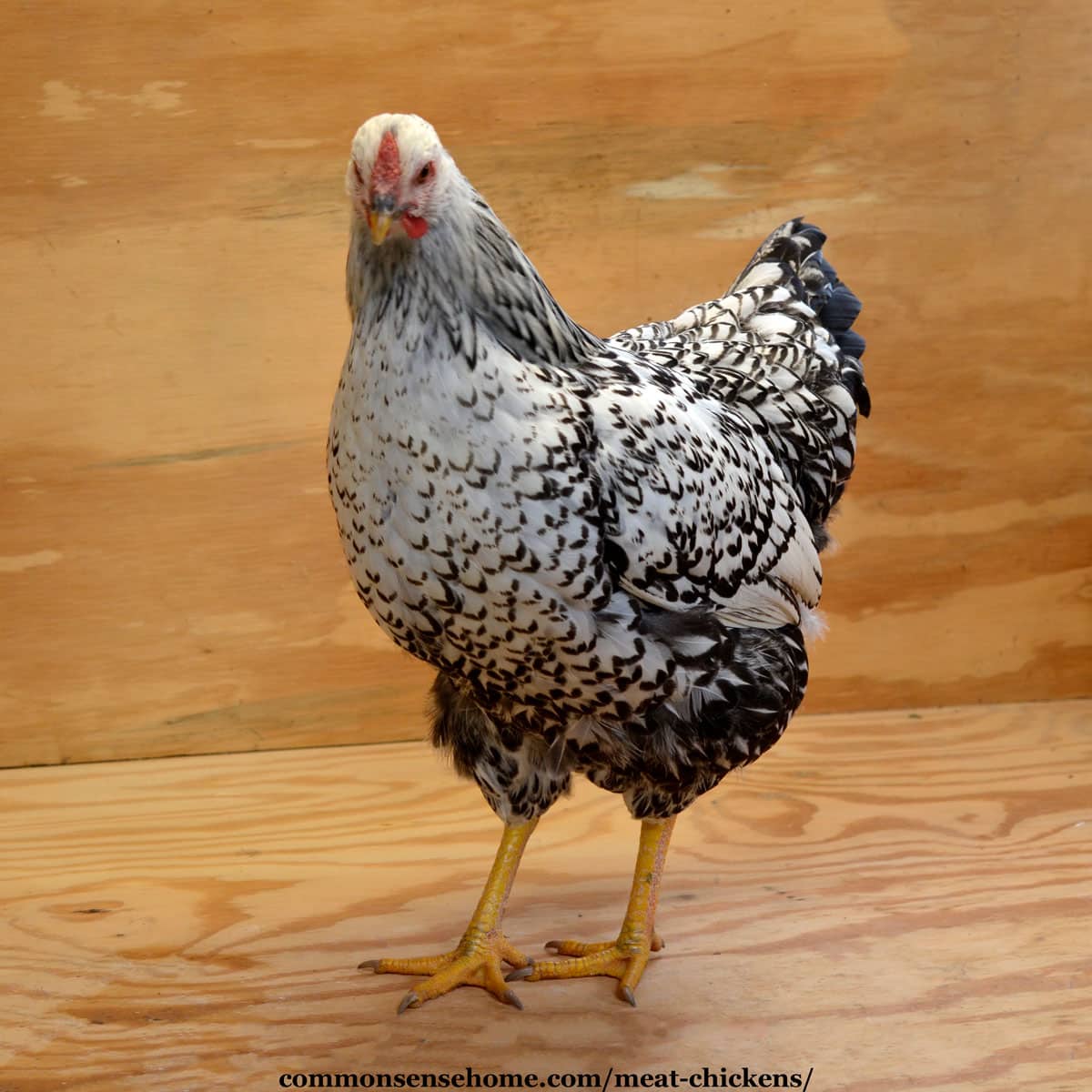
If you don’t mind a longer time to maturity and want a flock that you can use to breed more chickens, then dual purpose birds may be a good choice.
Because Cornish Cross are so widely available, the chicks also tend to be the most affordable.
Our top picks for best meat chickens are:
- Cornish Cross
- Freedom Ranger and other Ranger breeds
- “Broilers”, such as Murray’s Big Red Broiler or Cackle’s Red Broiler
- Kosher Kings
- Large Heritage Breeds such as Plymouth Rock, Jersey Giant, Delaware, Wyandotte, Orpinton, Chantecler and others raised for meat

You can butcher egg layers/laying hens for meat. Understand that the meat will be firmer (even chewy) and that there is likely to be less meat.
See “Best Laying Hens” for more information on egg layers.
Where to Buy Meat Chicken Chicks
The are many hatcheries offering day old chicks. Most hatcheries require a 25 bird minimum order.
If you want less, you can advertise that you want to split a shipment of chicks on Craigslist, or with friends.
If you are fortunate to live close enough to a feed mill, the mill will often have chick days in spring. You can walk in and get as few chicks as you like. Some will take orders for delivery in advance, so you can pick your arrival date.
Think about the number of birds that you want to put into your freezer. Many people like to start with about 10 chicks—not too many, not so few that you become too attached.
You also have to plan for cooler or refrigerator space to age the birds for a day or two before freezing. This eliminates rigor mortis and tenderizes the meat
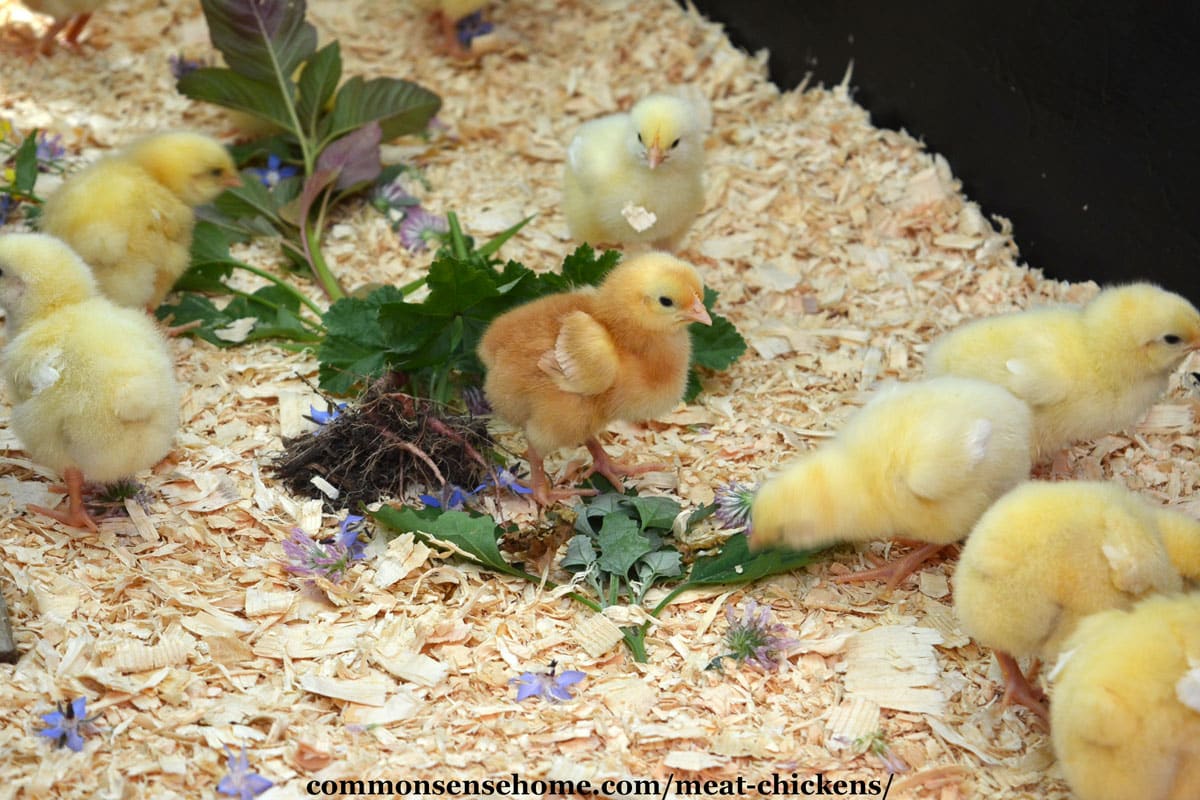
How long does it take to raise meat chickens?
Cornish rock birds raised as broilers will be ready in 6-10 weeks, depending on desired size. You can keep them longer for a bigger roasting bird, but past 12 weeks they often develop health issues.
“Rangers” and “Roasters” will be ready to butcher at 11-16 weeks.
Heritage breeds may take 6 months or more to reach full growth. When Laurie raised a flock of mixed heritage birds, they were 30% lighter at 21 weeks than the Cornish Cross at 8 weeks.
Care Requirements
What do you need to raise your own meat chickens?
Let’s think of this like a recipe. Start with your ingredients:
- Housing
- Equipment
- Feed
- Water
- Bedding
- Chickens!
Most of these basics, such as warm safe shelter and clean water, apply for any type of chicken or poultry.
The video below feature’s Laurie’s coop/garden shed setup.
Chick Housing
Chicks need a warm, draft free pen with adequate lighting and supplemental heat. This is called a chick brooder.
These can be as simple as a sturdy cardboard box set up in your basement or laundry room. Some people use water troughs, play pens or simple cardboard partitions.
You want the sides to be high enough to eliminate drafts, with room for your waterer, the feed dish, an area under the heat lamp.
The chicks need room to scamper away from the light and each other, about 0.75 sq.ft. per bird.
Provide Heat for Your Chicks – Safely
Unless you have a mama hen, you need an artificial heat source.
The simplest method is to buy a metal reflector base and use a red heat lamp bulb.
Do not use a Teflon coated bulb such as the GE Rough Service Worklight. These give off a gas that is toxic to chicks.
How warm should chicks be?
Start your babies with a temperature of 90 to 95 degrees F. Reduce the temperature by roughly 5 degrees each week, until they are fully feathered.
Measure the temperature at roughly the back level of a chick. I place a thermometer on the floor of the pen.
Since the floor is lower than back level, it may be a little cooler than 95 degrees. Raise or lower the light or adjust the bulb size to adjust the temperature.
Watch the behavior of your chicks. If they are too cold, they will pile up close to the light. If they are too hot, they’ll crowd away from the heat.
Place feed and water in a slightly cooler zone. There should be enough room that the chicks can move around and pick the temperature they need.
Depending on the number of chicks you buy, you may need a second heat lamp. Make sure that the box is big enough to safely accommodate an additional lamp, and that they still have cool zones.
Warning: Never use the electrical cord to hang the heat lamp; use the wires provided on the reflector.
Every year, people fail to secure the heat lamps, which then fall to the bedding and start a fire. Always keep heat lamps clear of flammable objects, and dust them as needed.
Chick Bedding
Pine shavings are the most common choice for chick bedding. Shavings are available at most pet and feed stores. Lay down shavings about one inch thick in the bottom of the brooder.
I lay an old sheet or paper towels over the shavings for the first few days only. This prevents them from eating the bedding in the first few days when they are ravenously pecking everything in sight.
After the first few days, you can skip the paper towels/sheet.
Some people use Rubbermaid shelf liners that they can wash and re-use.
Do NOT use plain newspaper in the bottom of your brooder. It is too slippery and can cause leg slippage and disability.
Another recommended bedding option is sand. The sand should be at least a half-inch thick.
Feeding Your Meat Chickens
When the chicks are tiny, you need about an inch of feeder space per bird.
I like using paper egg cartons because they are cheap, biodegradable, and readily available. You can even compost them when you are done!
One egg carton provides feeder space for roughly a dozen chicks.

As your meat chickens grow, switch to a larger feeder or dispenser. Always keep food clean and fresh.
Would you like to save this?
Protein is Critical for Meat Chickens
The protein level for broiler chicks should be a minimum of 20 percent protein.
This prevents leg problems and gives them plenty of nutritional building blocks for growth. Absolutely NO scratch feeds should be given to young chicks.
I recommend a good commercial chick starter such as Purina Start and Grow or Flock Raiser crumbles. All feed companies have their own version.
If you want to raise them organically, you will have to make sure you find your source of that in a starter form.
The labels will indicate whether or not a coccidiostat such as amprolium is added.
Chicken Waterers
Your best bet for a waterer is a commercial waterer with a quart or gallon reservoir and a screw on lid. When tipped, the lid/ base provides a little water trough for your new birds.
Nipple waterers stay cleaner, and most chicks learn to use them quickly. (Never use nipple waterers with waterfowl.)
A shallow bowl of water works if you have nothing else, but I don’t recommend it. If chicks fall in and get wet, they can get chilled. A cold chick is quickly a dead chick.
Add vitamin supplements, such as Vital, to the water to give your chicks a boost. Another option is a small amount of raw cider vinegar in the water to introduce helpful microbes.
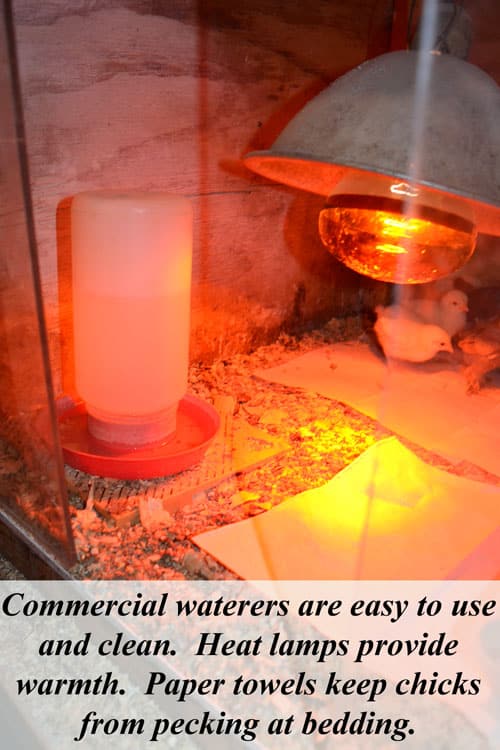
Getting Your Chicks Settled in Their New Home
When the phone rings that the chicks are in, go to the post office or feed mill to pick them up. Leave them in the original shipping boxes until they are ready to go into the brooder.
As you remove chicks from the box, carefully hold them around their little bodies.
They’ll be thirsty from their trip, so we need to make sure each one gets a drink. Tip them down and dip their beaks to show them where the water is.
The first water should be slightly warm and can have your vitamin solution and up to 1/4 cup of sugar per gallon added for extra energy the first day only.
Let them drink for one hour before giving them feed.
Troubleshooting Tips for Raising Meat Chickens
Happy chicks make contented peeps. If the chicks peep loudly, that is usually a sign of distress. (Sometimes it’s a call of excitement. You’ll quickly learn the difference.)
There may be a predator or other threat, or a chick may be separated from the flock.
Stressed or overcrowded chickens may also peck at each other, drawing blood. Improve conditions before they seriously injure each other.
Pasty Butt
Young chicks sometimes develop pasty butt, where the poop cakes up and blocks their butt hole. It’s most common in mail order chicks that are stressed from shipping.
To remove, gently cup the chick in one hand and run warm water over its butt. Use your fingers to massage the poop loose (you may want gloves for this). Don’t pull at the plug, or you may injure the chick.
Once the poo plug is removed, gently dry the chick with a towel or blow dryer set on low.
Temperature Checks
Chicks should be evenly distributed around the box, not huddled under the light (too cold) or pressing themselves against the sides of the box to get away from the heat lamp (too hot).
If they are too cold, chicks may pile on top of one another and crush the bottom chicks. Chicks that are too warm get overstimulated and may begin to pick on each other. Beyond that, the heat can actually kill them.
Visit this post for ideas to keep your chickens cool in summer heat.
Watch for Over Eating
One caution on the Cornish cross birds – they will eat like little piggies.
Standard practice is to restrict their feed by a week of age by taking away the feed at night for twelve hours each day. The theory is that removal of feed slows their growth so that their inner organs can keep up to their rapidly expanding bodies.
You might notice that meat chickens, especially Cornish Cross, gain weight so quickly that they have naked spots on their bodies. This is normal and not a cause for concern as long as the bare skin looks healthy.
Keep a Clean Environment
Fresh bedding is also important. Sift out droppings every few days, or fluff and add more bedding if using the deep litter method.
This prevents the buildup of odors and reduces the risk of coccidiosis.
Coccidiosis is caused by a protozoa, which the chicks can pick up from their environment. They re-infect themselves by exposure to their own droppings, so clean bedding, feed, and water are important.
Always wash your hands after handling chickens and bedding, and don’t wear your “coop shoes” around the house.
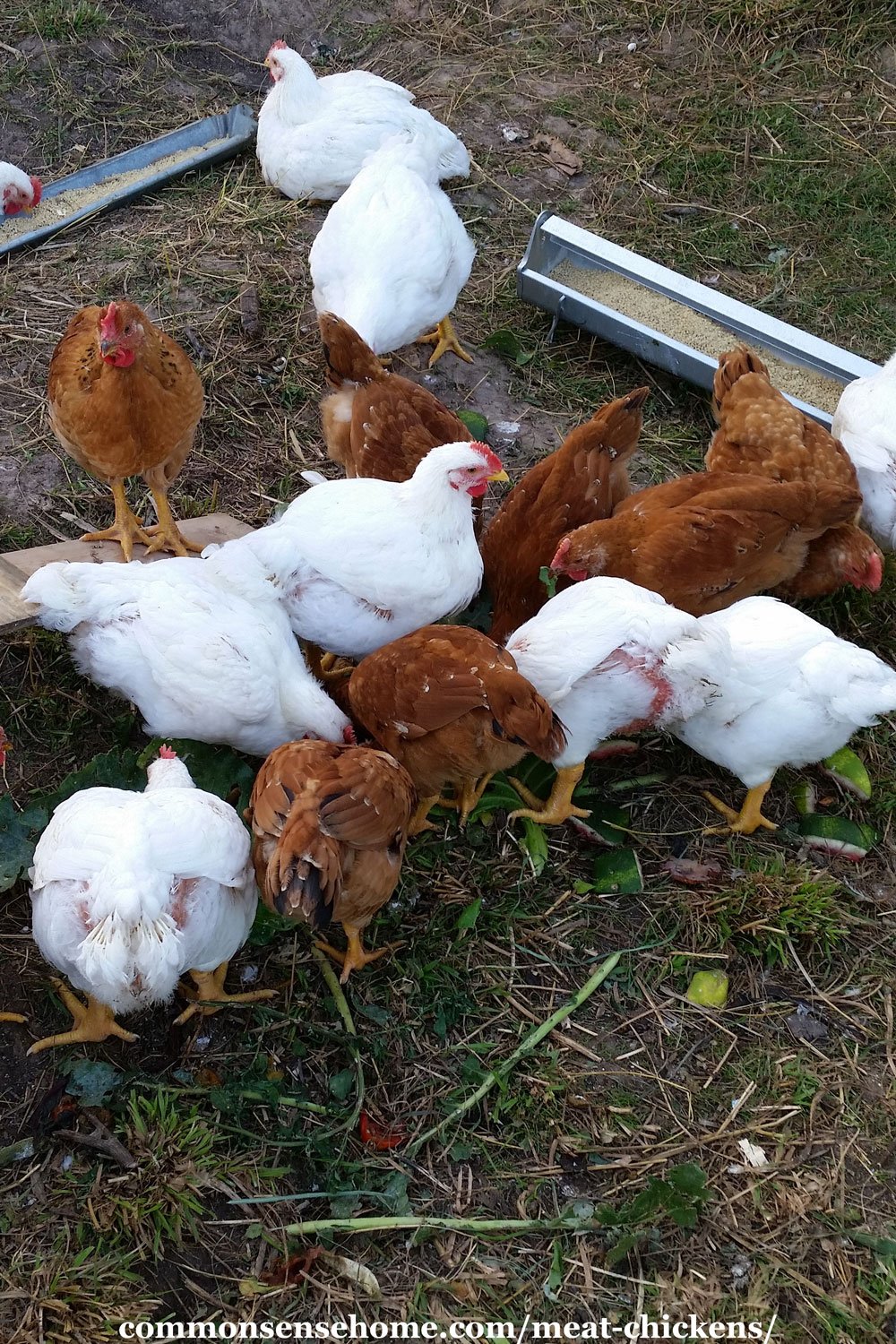
Care as Your Meat Chickens Grow
Your chicks will quickly begin to grow feathers and look like little dinosaur chickens.
- At about two weeks, you may want to move them to a more permanent pen, still taking care to give them plenty of room and protection from drafts.
- At about four weeks, you can begin to get them outside on the grass.
It is critical for meat chickens to continue to get a high quality feed, so consider the grass as a supplement.
See “What to Feed Chickens – Do’s and Don’ts for a Healthy Chicken Diet” for other foods that are safe to add as supplements.
Once they have access to greens, they also need grit. Make sure they have chick grit if you give them edible flowers or other nibbles.
Any pen you have them in outside must be secure from predators and provide the chicks shelter from wind and sun. We move ours around the yard in chicken tractors or have large runs.
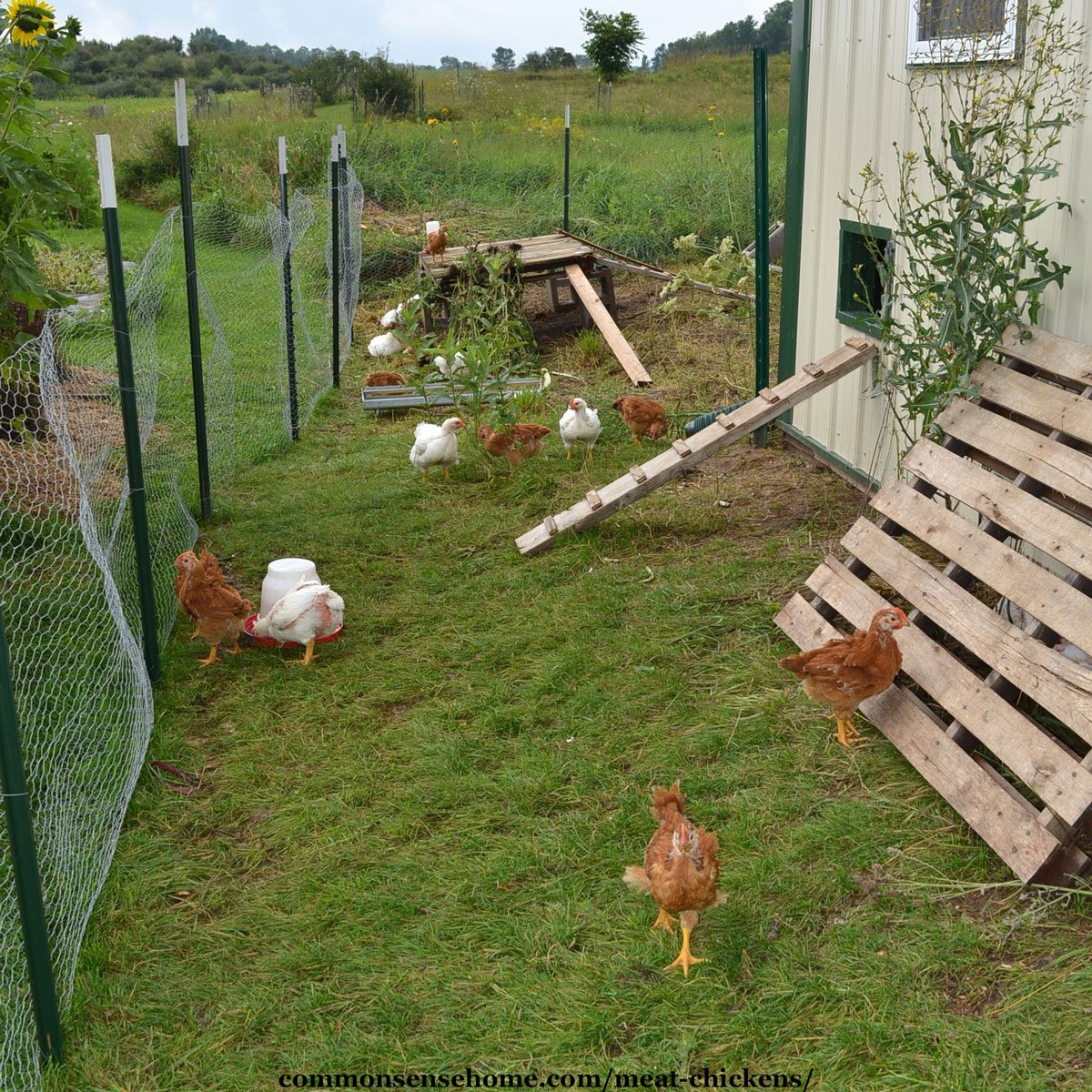
Larger meat birds need around 2 square feet per bird in a coop or chicken tractor. If you choose to free range your birds, beware of predators. They enjoy a good chicken dinner, too.
The chickens will be ready for butchering time as listed above.
Note that processed weight is less than live weight. For Cornish cross, estimate roughly 75% of live weight. For other breeds, estimate between 70-65% yield.
I hope this article gives you the information you need to tackle raising your own meat chickens. I’m sure you’ll agree, the flavor of home raised birds beats the pants off the flavor of grocery store birds.
More Homesteading Advice
For more information on raising chickens, rabbits, ducks, geese, and goats, see:
- Top 7 Tips for First time Chicken Owners
- How to Raise Chickens Cheaply – Tips for Raising Chickens on a Budget
- Meat Rabbits – What You Need to Know to Raise Rabbits for Meat
- Getting Started with Homestead Goats
- Using Ducks in the Garden
- Homestead Geese

This is a guest post by Debra Ahrens.
Debra lives with her family on a five acre hobby farm in northeastern Wisconsin.
Besides the School of Hard Knocks (Life), she attended UW-River Falls, majoring in Dairy Science. Along with her husband Jerry and their three youngest daughters, they raise almost every kind of domestic poultry known to man.
Their furry animal family includes a flock of Suffolk sheep, dairy goats, a few rabbits, their dog and a lone beef heifer, Thelma. In her spare time, Debra is a poultry and sheep project leader for Kewaunee County 4-H.
Originally posted in 2015, last updated in 2020.


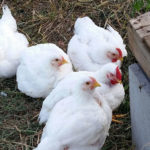
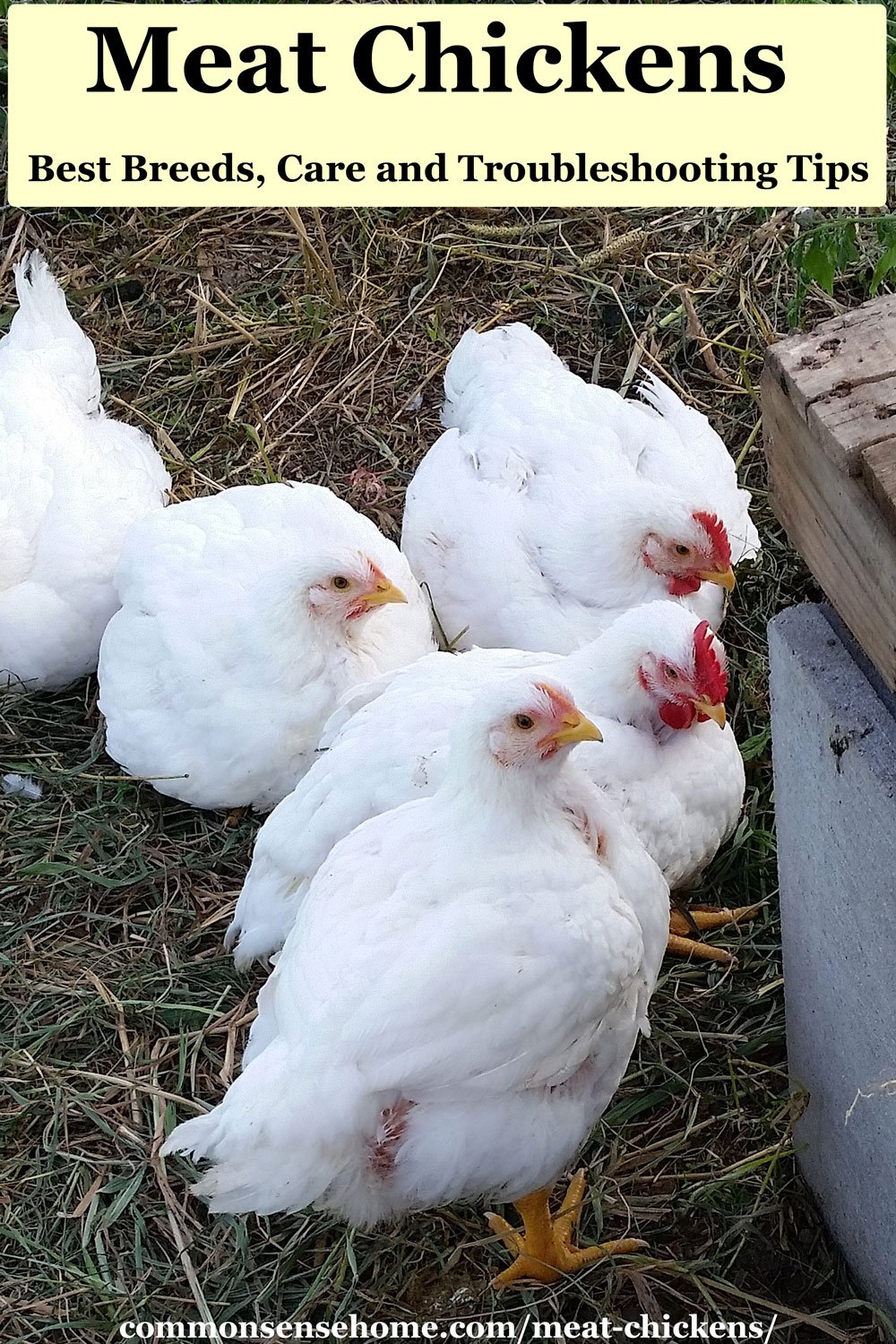

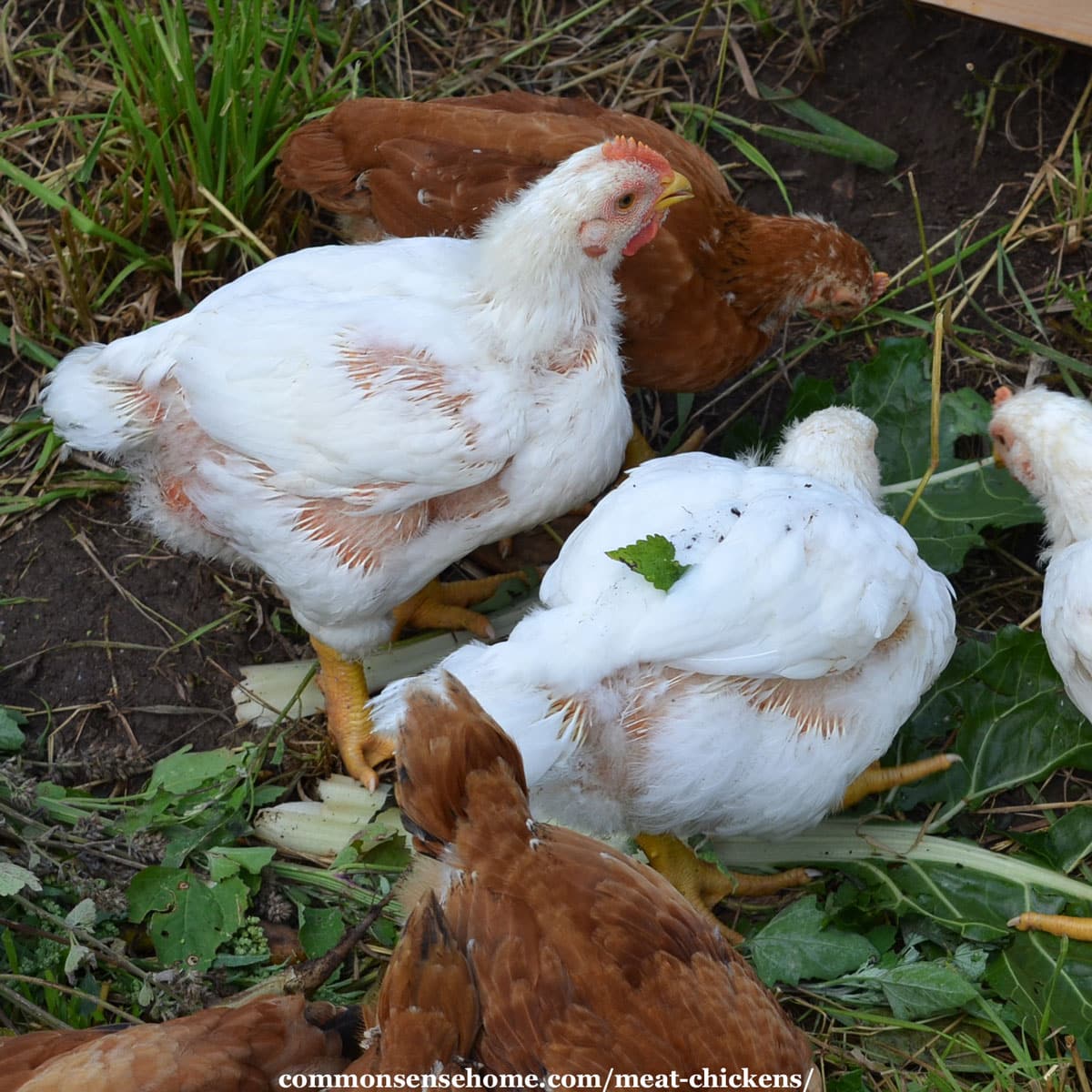
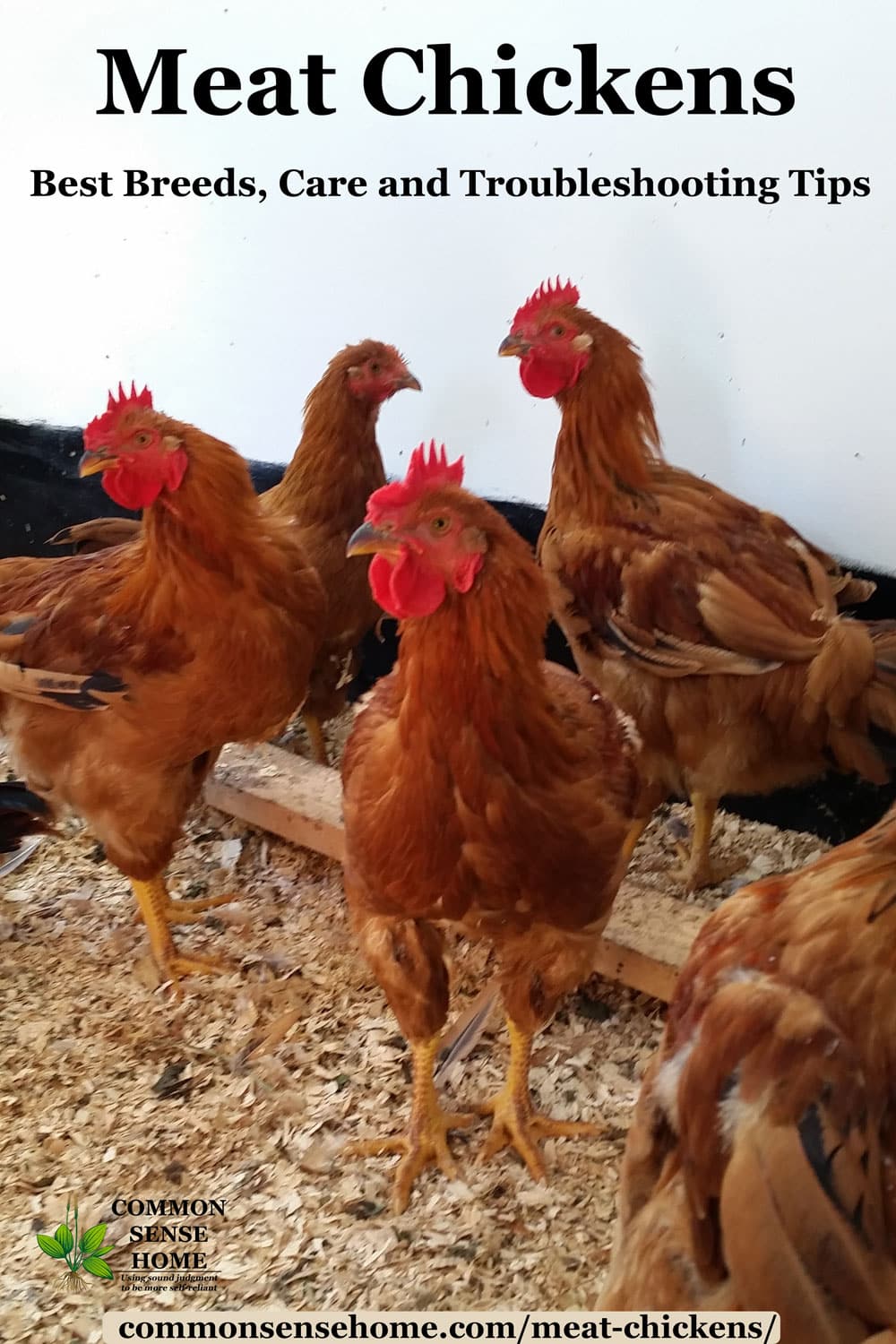
My Cornish cross meat birds have very puffy butts is this normal? They are 2 1/2 weeks old
Cornish Cross are very fast growing, so if by “puffy butts” you mean that their little half naked behinds are pooching out around their feathers/down, that’s not unusual. Slower growing birds develop feathers more evenly, but the Cornish Cross put most of their energy into bulking up, so they will often have bare patches where the feathers don’t quite cover.
If the cloaca (chicken butthole) is puffy, then there might be something amiss. Watch for other signs of stress, and make sure not to overfeed them and keep them well-hydrated. Some batches of Cornish Cross will attempt to eat so much the keel over, so many folks recommend taking away food at night.
Hi, I’m in ON Canada and have been wanting to purchase a good quality Suffolk sheep. I’d read an article that told me of Debra Ahrens in WI but I cannot find her contact information. Is it possible to message me with her email perhaps? iknitnspin@gmail.com is where I can be found. Thanks so much. Jan
Janet, I’ll let Deb know about this comment so you two can connect.
As I live in an area (unincorporated, but ore restrictive than in town) where I am “allowed juvenile chickens” but it will cause draw, I am wondering if you have any thoughts on raising a few meat chickens indoors and providing them with tons of fresh weeds to munch like I did for my flock of chickens?
I have a neighbor who raises laying hens in a large shed like this, but chickens do best with some sunlight and fresh air. I bought eggs from her – once, and they were very pale and runny.